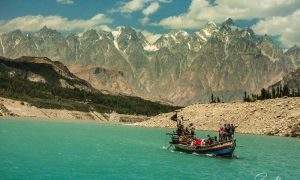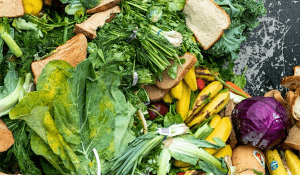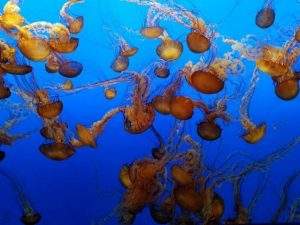|
Listen while working
Getting your Trinity Audio player ready...
|
Over the last decade all global efforts to save Earth’s endangered species and declining ecosystems have mostly spoiled, due to lack of commitments and implementation of adequate measures. The latest report published by WWF (World Wide Fund for Nature) one of the world’s largest and independent conservation organizations in collaboration with Institute of Zoology (Zoological Society of London) has indicated a dire future, with decline of Global Living Planet Index. According to the report, there is an average of 68% decline in population size of living species, between 1970 and 2016.
The root, is the destruction of forests and wetlands due to increasing industrialization. The report indicates “75% of the Earth’s ice-free land surface has already been significantly altered, most of the oceans are polluted, and more than 85% of the area of wetlands has been lost”, after the rapid and uncontrolled industrial growth, without re-forestation drives. United Nation’s environment Program shows that, per person, our global stock of natural capital has declined by nearly 40% since the early 1990’s.
“This destruction of ecosystems has led to 1 million species (500,000 animals and plants and 500,000 insects) being threatened with extinction over the coming decades to centuries”.
In last three decades the human population has almost doubled, with increase in urbanization, and resultant change of land use into increasing commercial developments. On the other side of spectrum, the agriculture is being changed tremendously to meet up the increasing demand. Introduction of artificial methods of getting more crop, in specified area has led to over stressing the natural process, and pollution with excessive chemicals.
Climate change, which is being debated for years, has yet to see some positive implementations. Over the decades there has been serious threat to earth’s ecosystem due to change in green-house gases, which are vital in development of biodiversity. Global warming has already changed the ice-covered areas significantly, and at present rate it is forecasted to increase by 1.50C by 2030.
Some of the salient statistical data from the report is summarized as follows, in order for us to understand the approximate extent of damage done.
“The 3,741 monitored populations – representing 944 species of mammals, birds, amphibians, reptiles and fishes – in the Freshwater Living Planet Index have declined by an average of 84% (range: -89% to -77%), equivalent to 4% per year since 1970.”
“People living in cities now account for 50% of the global population. In the last 50 years this number has increased more rapidly, by 30%, in developing and least developed countries where many live in slums lacking resources and access to public services. Yet, in the same time period, child mortality decreased overall, more sharply in least developed countries (350% decrease); and caloric intake increased globally by 20%, even though many people in least developed countries are still below the thresholds recommended by the World Health Organization”
“Migration has also changed the face of our planet. More than 260 million migrants have entered other countries since 1970, mainly developed countries”
“Through changes in technology and land management practices, global bio-capacity has increased by about 28% in the past 60 years”.
This means that the human enterprise currently demands 1.56 times more than the amount that Earth can regenerate
“Globally, more than 820 million people face hunger or food insecurity, while staggering quantities of food loss and waste result in US$1 trillion in economic costs, around US$700 billion in environmental costs and around US$900 billion in social costs”
“Food loss and waste also contributes to climate change. It is responsible for at least 6% of total global greenhouse gas emissions, three times more than the global emissions from aviation. Almost a quarter – 24% – of all emissions from the food sector comes from food that is lost in supply chains or wasted by consumers”
“Nowhere in the ocean is entirely unaffected by humans: only 13% of its area is considered to be wilderness, waste and marine litter are found even in deep ocean trenches, and human pressures are increasing over time”.
Recent Impacts of Climate Change
“In 2019, Africa had its largest outbreak of desert locusts in decades. It originated in the southern Arabian Peninsula, where climate change caused two cyclones with unusually heavy rainfall in 2018. These conditions created perfect breeding grounds for the locusts, which migrated to East Africa and South Asia causing widespread crop devastation.”
“Australia was impacted by one of the most intense bushfire seasons ever recorded, with over 10 million hectares, an area the size of Iceland, burnt and more than 10 million people exposed to thick smoke. This crisis was exacerbated by unusually low rainfall and record high temperatures; as well as excessive logging that has created drier and more flammable under-story vegetation”
“The outbreak of a previously unknown coronavirus in 2020 generated a pandemic that held the world hostage. In just its first six months, hundreds of thousands of people died, millions were infected, and society was confronted with a long lasting economic impact in the order of trillions of US dollars.”
“The rate of infectious disease emergence has drastically increased over the last 80 years, with one study suggesting that diseases originating in animals cause 2.5 billion cases of illness, and nearly 3 million deaths, each year.”
Lets prevent our NATURE
The changes in nature including the land, sea and air is substantial and the pace is greater than its recovery. The biodiversity and protection of our natural resources is key to the survival of human beings in years to come. Protection of our environmental landscape is not only essential in preventing further deterioration of the already worsened situation, rather it is the key of our economic development.
There are multiple international agencies working in coordination for collection of data, and improvising the analysis to offer the real picture of environmental changes, but the actual legislation and implementation has yet to be seen.
On individual level there is a huge responsibility, in understanding and taking precautionary measures. These small steps together can make a significant change. The wastage of food and water is the prime factor neglected by majority without understanding the economical losses. Forest conservation and plantation at individual level is being promoted in many countries, which is far below the deforestation level, yet it has its value. Saving electricity drives are being precariously promoted, but the response is low, due to lack of information.
The preservation of our environment is the responsibility of every single person, it is not the sole obligation of the governments. We all have to play our role individually and socially, in prevention of further impairment as well as recovering the damage done to our environment.
Reference: LIVING PLANET REPORT 2020, BENDING THE CURVE OF BIODIVERSITY LOSS
Photo by Flo Maderebner from Pexels





